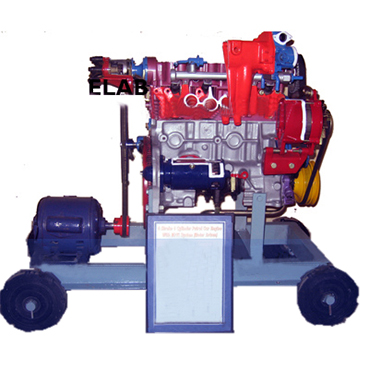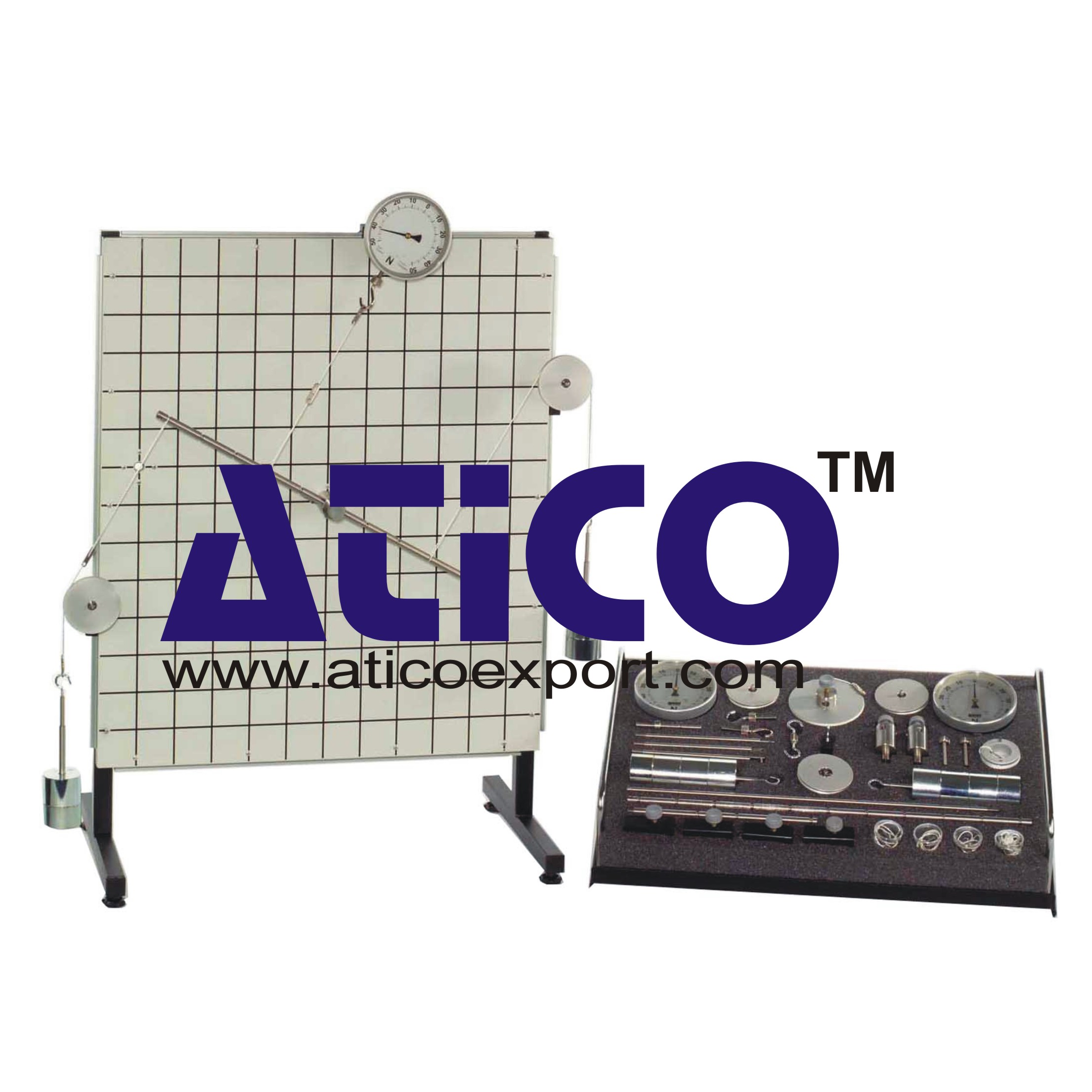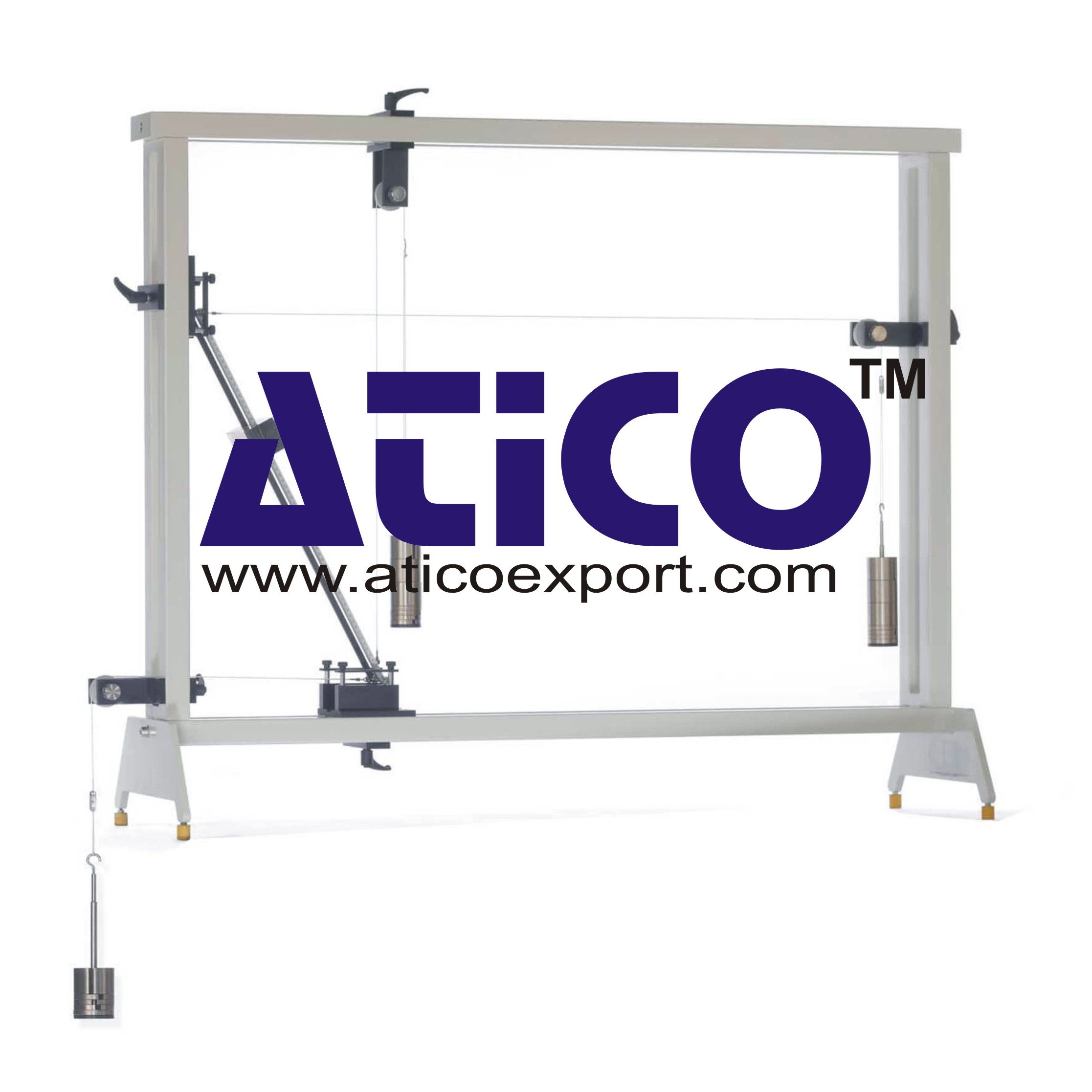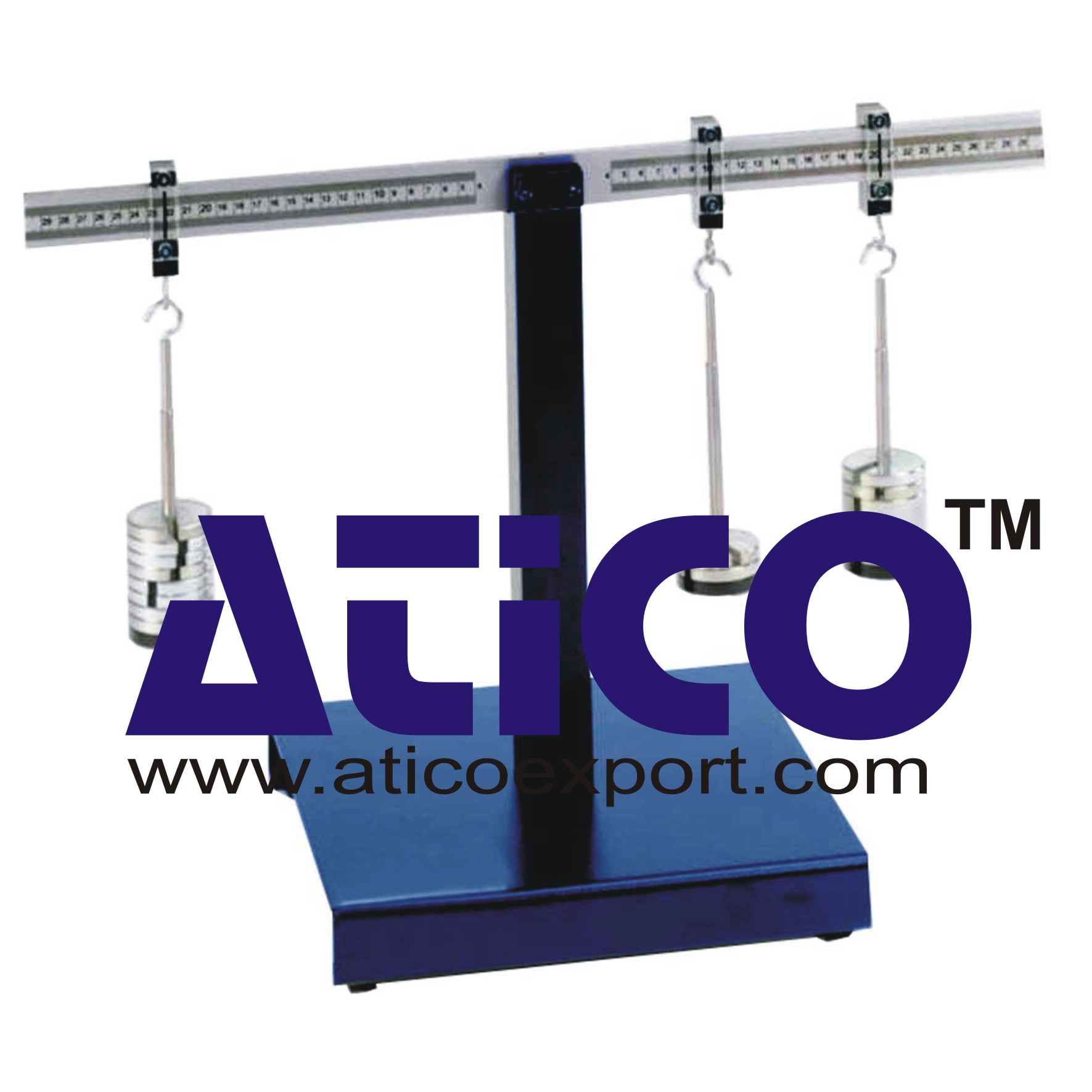Four Joint Link
Categories: Engineering Lab EquipmentThe four-joint link is a four-bar pivot gear. It converts rotary motion into oscillating motion. The unit can be used to investigate the crank-rocker mechanism, the double rocker mechanism and the do...
Product
Description
The four-joint link is a four-bar
pivot gear. It converts rotary motion into oscillating motion.
The unit can be used to
investigate the crank-rocker mechanism, the double rocker mechanism and the
double crank.
The experimental unit comprises
the drive disk with the crank and coupling and the output disk with the rocker.
The elements are connected to each other via pivot joints. The positions of the
pivot joints can be varied to adjust the crank radius, oscillation radius and
coupling length. The drive disk can be driven by the crank.
The input angle is adjusted using
the drive disk, and an angle scale is integrated into the base plate. The
output angle is read at the angle scale on the output disk.
The elements are mounted on a base
plate. Two handles make it easy to carry and stack the unit.
Learning Objectives/Experiments:
Investigation of the mechanical
relationships on the four-joint link
Investigation of the principle of
the crank-rocker mechanism, double rocker mechanism and double crank
Verification of the Grashof
condition by varying the crank radius, oscillation radius and coupling length
Specification
Investigation of a four-joint link
Adjustment of the crank radius at
three positions of the crank on the drive disk
Adjustment of the oscillation
radius at three positions
Adjustment of the coupling length
at five positions
Adjustment of the input angle by
turning the drive disk
Measure the output angle on the
angle scale of the output disk
Technical Data
Drive disk and output disk
Anodised aluminium
Ball-bearing mounted
Crank radius
25mm, 37,5mm, 50mm
Rocker
Aluminium, anodised black
Oscillation radius: 50mm, 100mm,
200mm
Coupling
Aluminium, anodised black
quick overview :
The four-joint link is a four-bar
pivot gear. It converts rotary motion into oscillating motion.
The unit can be used to
investigate the crank-rocker mechanism, the double rocker mechanism and the
double crank.
The experimental unit comprises
the drive disk with the crank and coupling and the output disk with the rocker.
The elements are connected to each other via pivot joints. The positions of the
pivot joints can be varied to adjust the crank radius, oscillation radius and
coupling length. The drive disk can be driven by the crank.
The input angle is adjusted using
the drive disk, and an angle scale is integrated into the base plate. The
output angle is read at the angle scale on the output disk.
The elements are mounted on a base
plate. Two handles make it easy to carry and stack the unit.
Learning Objectives/Experiments:
Investigation of the mechanical
relationships on the four-joint link
Investigation of the principle of
the crank-rocker mechanism, double rocker mechanism and double crank
Verification of the Grashof
condition by varying the crank radius, oscillation radius and coupling length
Specification
Investigation of a four-joint link
Adjustment of the crank radius at
three positions of the crank on the drive disk
Adjustment of the oscillation
radius at three positions
Adjustment of the coupling length
at five positions
Adjustment of the input angle by
turning the drive disk
Measure the output angle on the
angle scale of the output disk
Technical Data
Drive disk and output disk
Anodised aluminium
Ball-bearing mounted
Crank radius
25mm, 37,5mm, 50mm
Rocker
Aluminium, anodised black
Oscillation radius: 50mm, 100mm,
200mm
Coupling
Aluminium, anodised black
Product
Reviews
add Review
reviews
No Review Yet.
Copyrights © 2025 All Rights Reserved by Atico














Product
Reviews
add Review
reviews
No Review Yet.